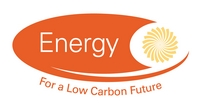Projects
Projects: Custom Search |
||
| Reference Number | EP/Y028163/1 | |
| Title | SHIELD - Self-Healing Electrode for energy storage Devices | |
| Status | Started | |
| Energy Categories | Other Power and Storage Technologies (Energy storage) 100%; | |
| Research Types | Basic and strategic applied research 100% | |
| Science and Technology Fields | PHYSICAL SCIENCES AND MATHEMATICS (Chemistry) 30%; PHYSICAL SCIENCES AND MATHEMATICS (Physics) 30%; PHYSICAL SCIENCES AND MATHEMATICS (Metallurgy and Materials) 40%; |
|
| UKERC Cross Cutting Characterisation | Not Cross-cutting 100% | |
| Principal Investigator |
Dr C George Design Engineering (Dyson School Imperial College London |
|
| Award Type | Standard | |
| Funding Source | EPSRC | |
| Start Date | 01 July 2023 | |
| End Date | 30 June 2025 | |
| Duration | 24 months | |
| Total Grant Value | £200,512 | |
| Industrial Sectors | ||
| Region | London | |
| Programme | UKRI MSCA | |
| Investigators | Principal Investigator | Dr C George , Design Engineering (Dyson School, Imperial College London (100.000%) |
| Web Site | ||
| Objectives | ||
| Abstract | The climate crisis caused by increased carbon emissions is one of the major concerns globally. The exploitation of untapped renewable energy resources (wind, solar power, etc.) is an effective solution for clean energy; however, their intermittent nature remains a challenge. Energy storage devices can efficiently capture and redistribute recurrent energy as per supply and demand. Lithium-ion batteries (LIBs) are mainstream storage devices due to their excellent electrochemical performances. LIBs also find applications in portable electronic devices, power tools, electric vehicles, etc. However, LIBs' limited cycle life, capacity decay, and low availability of lithium resources pose significant challenges. Alternative chemistries like sodium-ion batteries (SIBs) are appealing due to their cost effectiveness (widely available resources). However, they still use hard carbon (< 300 mAh g-1) as anode material, limiting their energy densities. The exploitation of alternative high-capacity anodes (> 800 mAh g-1) is hindered by their huge volume expansion due to the insertion of large size sodium-ions, which on battery cycling, result in crack formation, pulverization, and battery failure. Therefore, this project (SHIELD) aims to develop crack-free electrodes with high-capacity anodes by incorporating self-healing polymers that initiate a self-healing mechanism, mimicking biological wound healing. Unlike conventional electrodes, the self-healing polymer binder mends the cracks during cycling by fully restoring them after rupture via cross-linked hydrogen bonds. The resultant smart and thicker electrodes (for both Na ion batteries) with improved mechanical integrity can deliver long-term cycling performances favouring the wide applicability of battery technologies supporting renewables | |
| Data | No related datasets |
|
| Projects | No related projects |
|
| Publications | No related publications |
|
| Added to Database | 02/08/23 | |



